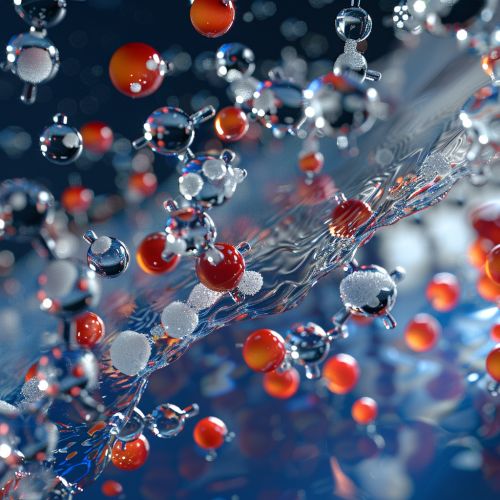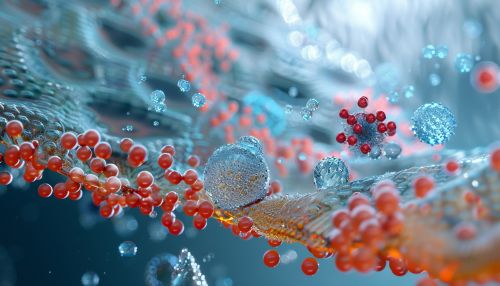Detergent removal
Introduction
Detergent removal is a crucial process in many scientific and industrial applications. Detergents, which are a class of surfactants, are widely used in biological research and various industries due to their ability to solubilize and interact with lipids and proteins. However, the presence of detergents can interfere with downstream applications, making their removal a necessary step. This article provides a comprehensive overview of the methods and techniques used for detergent removal, the challenges faced, and the considerations that need to be taken into account.


Detergents: An Overview
Detergents are amphipathic molecules, meaning they have both hydrophilic (water-attracting) and hydrophobic (water-repelling) parts. This unique structure allows them to interact with both water and non-polar substances like oils and fats, making them excellent for cleaning and solubilizing purposes. In the field of biochemistry, detergents are often used to solubilize proteins and lipids from cells and tissues, enabling their extraction and study. However, the presence of detergents can interfere with many downstream applications, such as protein crystallization, mass spectrometry, and various types of assays. Therefore, it is often necessary to remove detergents from samples after they have served their purpose.
Methods of Detergent Removal
There are several methods available for detergent removal, each with its own advantages and disadvantages. The choice of method often depends on the specific requirements of the downstream application, the nature of the sample, and the type of detergent used.
Dialysis
Dialysis is a simple and cost-effective method for detergent removal. It involves placing the detergent-containing sample in a dialysis bag or tube with a semi-permeable membrane, which is then immersed in a large volume of buffer. The detergent molecules diffuse out of the sample and into the buffer over time, driven by the concentration gradient. However, dialysis can be time-consuming and may not be efficient for removing all types of detergents.
Size-Exclusion Chromatography
Size-exclusion chromatography (SEC), also known as gel filtration, is another common method for detergent removal. In this technique, the sample is passed through a column packed with porous beads. The detergent molecules, being smaller, enter the pores and are delayed, while the larger molecules in the sample pass through the column more quickly and are collected separately. SEC is efficient and can handle large sample volumes, but it requires specialized equipment and can be expensive.
Adsorption-Based Methods
Adsorption-based methods involve the use of materials that selectively bind detergents, allowing them to be separated from the sample. One such material is Bio-Beads, which are hydrophobic polystyrene beads that adsorb detergents. Another is the detergent-removal spin column, which contains a resin that binds detergents. These methods are quick and easy to use, but they may not be suitable for all types of detergents and can sometimes lead to sample loss.
Considerations in Detergent Removal
The process of detergent removal is not always straightforward and requires careful consideration of several factors. These include the type and concentration of detergent, the nature of the sample, and the requirements of the downstream application.
Type and Concentration of Detergent
Different detergents have different properties, such as size, charge, and hydrophobicity, which can affect their removal. For example, ionic detergents like sodium dodecyl sulfate (SDS) can be removed by ion-exchange methods, while non-ionic detergents like Triton X-100 may require different techniques. The concentration of detergent in the sample can also influence the choice of removal method.
Nature of the Sample
The composition of the sample can also affect detergent removal. For instance, samples with high lipid content may require more rigorous detergent removal methods, as lipids can form complexes with detergents that are difficult to remove. Similarly, the presence of certain proteins or other biomolecules can interfere with some removal methods.
Requirements of the Downstream Application
The choice of detergent removal method can also depend on the specific needs of the downstream application. Some applications, such as mass spectrometry, require complete removal of detergent, while others may tolerate small amounts. The method should also preserve the integrity of the sample and avoid causing unwanted modifications.
Challenges in Detergent Removal
Despite the availability of various methods, detergent removal can pose several challenges. One major challenge is the risk of sample loss or damage during the removal process. Detergents are often used to stabilize proteins and other biomolecules, and their removal can cause these molecules to denature or aggregate. Another challenge is the difficulty of completely removing detergent, especially from samples with high lipid content or complex composition. Residual detergent can interfere with downstream applications and lead to misleading results.
Conclusion
Detergent removal is a critical step in many scientific and industrial processes. While there are several methods available, each with its own strengths and weaknesses, the choice of method often depends on the specific circumstances. By understanding the principles and considerations involved in detergent removal, researchers and practitioners can make informed decisions and achieve the best possible results.
